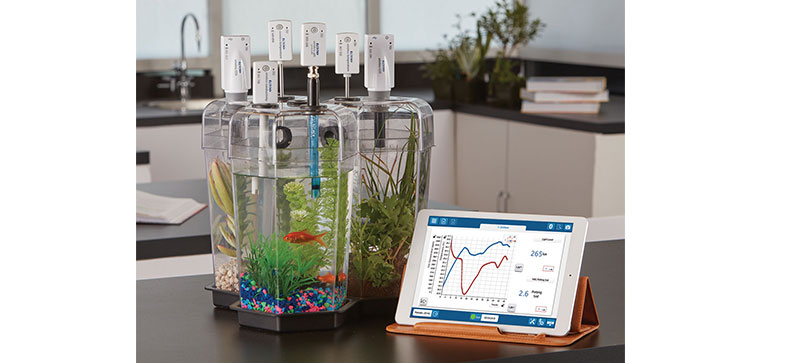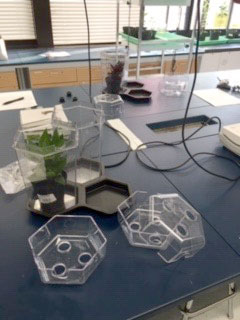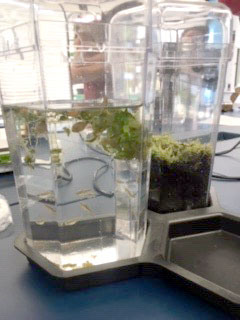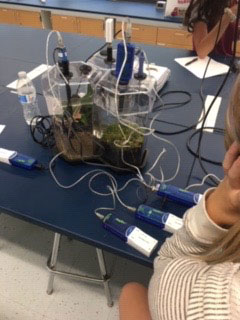Using PASCO EcoZones to Perform IB Biology Lab Practical 5: Sealed Mesocosms
New York-based IB Biology teacher, Brian Haldenwang, shares his tried and true method for tackling one of IB Biology's more complex lab practicals.

When the IB Biology curriculum changed in 2014-2015, one of the biggest changes was the addition of 7 lab practicals. Not only would every student need to perform the practicals, but they would also be tested on concepts from those practicals during the IB Exam at the culmination of the course.
Most of these lab practicals were standard biology experiments, such as testing a factor on enzyme function or measuring transpiration rates with potometers, but lab practical 5: Sealed Mesocosms, was one that I and many other IB Biology teachers were unsure about doing. The premise was simple: have students try to create a sustainable ecosystem in a small space. While many biology teachers have done similar experiments with things like soda bottle ecosystems or greenhouses (if their school had one), the conclusion was the same. The problem with these setups is that you can create an ecosystem, but the data is strictly observational and qualitative.
My first time teaching under the new curriculum, I chose to do soda bottle ecosystems and quickly realized that while it was fun and interesting, it was lacking in some of the core data collection and processing methods that IB Biology students are required to perform. That prompted me to start researching different ways to carry out the experiment, which is when I ran across the PASCO EcoZones.
The EcoZones are a great way for students to create their own sustainable ecosystem and measure plenty of environmental factors with various PASCO probes. I ended up taking a lab from the PASCO Advanced Environmental Science Lab Manual and modifying it for my IB Biology needs. Below is a brief summary of what I do with my classes. Please feel free to download the full lab (see attachment at bottom of page) to perform with your students.
Ecosystem PlanningI allow the students to create any combination of 3 interconnected EcoZones they want. The only restriction I give them is that they must use the string to connect the EcoZones, so that water can flow between them. They are also only allowed to open the ecosystem once, on the 7th day of measurement. |
 |
|
Aquatic, Terrestrial, and Decomposition ZonesMost students end up with 1 aquatic zone and 2 terrestrial zones. The terrestrial zones vary from just a potted plant to simulated deserts. I let students know that they must measure at least six factors of their choosing. Their ecosystems typically run for a week, and we take measurements daily for all six factors. On the 7th day, I allow them to open the ecosystem to add one pollutant (and remove dead fish if they smell). |
 |
|
Variables of Interest and Daily MonitoringI provide a dilute solution of fertilizer, a dilute HCl solution (to simulate acid rain), and Alka-Seltzer tabs, which they can drop into a small beaker of water placed in a terrestrial ecosystem to release CO2. We then allow the ecosystem to continue running for an additional 7 days, taking daily readings. We then graph all of the data for the entire 2 weeks and identify any changes that the pollutant made to the ecosystem. While we still collect qualitative data, we focus mostly on the quantitative data we get from the probes. |
 |
Materials
- PASCO EcoZone System (with stoppers)
- PASCO Probes (CO2 gas, pH, Weather, Temperature, O2 gas, Dissolved O2, Salinity, Nitrate)
- PASCO AirLinks (not required with Wireless Sensors)
- Data logger (I use iPads with PASCO SPARKvue)
- Potting soil or sand
- Pond water
- Algae culture (Chlorella)
- Beakers
- String to connect the ecosystems (I used a thinner string than the one provided with the EcoZone, because it transfers too much water between the terrestrial systems.)
- Various animals: fish (I’ve done goldfish or zebras), crickets, worms (earthworms or mealworms), pillbugs, hydra, daphnia.
- Various plants: moss, grass seed, small potted plants (I’ve used mums, begonias, impatiens), aquatic plants (I use elodea)
- Pollutants: HCl, fertilizer, CO2 source (I used Alka-Seltzer)
- Detritus (decaying leaves, grass clippings)
File Attachments
| IB Bio Lab Practical 5: Sealed Mesocosms, Modeling Ecosystems | File Size: 958.50 KB |






